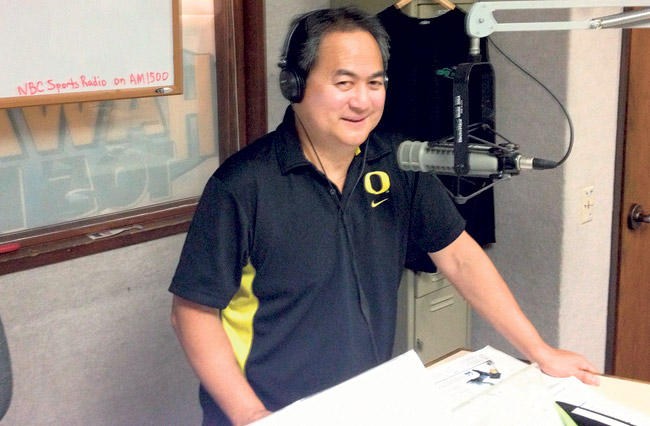Hawaii’s Own NFL Draft Guru
After last weekend’s NFL draft, you probably heard tens or even hundreds of analysts present their player evaluation as well as a litany of team wants and needs followed by mock drafts aiming to give a preview of each NFL team’s eventual selections. But how and why does a person become a draft analyst? In the case of Honolulu Star-Advertiser assistant sports editor Curtis Murayama, it began by being a fan of the San Francisco 49ers.
“My brother Randy was nine years older, and I’d listen to the Niners games with him when we did yard work or washed the car,” recalls Murayama. “These were the John Brodie days, and I became curious about how they put teams together.”
His first mock draft was compiled in 1971 as a senior at Kaimuki High.
“That was that great class, with players like Jim Plunkett, Archie Manning, Jack Tatum, John Riggins and Jack Youngblood,” says Murayama.
At the University of Oregon, he brought his 1976 mock draft to the sports information office and left it on the desk to raised eyebrows. That turned into shock and awe when he correctly predicted Ducks’ CB Mario Clark to be picked by Buffalo at No. 18 in the first round. When he started work at the Honolulu Advertiser in 1978, his drafts went in the paper. Murayama started to develop contacts that would provide insights.
“I met a number of scouts at the Hula Bowl,” says Murayama. “I developed relationships with some guys who have moved into front-office jobs, and one will still talk to me for hours.”
Don’t bother asking him who they are; like most newspaper people, Murayama knows how to protect a source. But it’s no surprise that he has gotten pretty good at mock drafts since he’s been doing them six years longer than ESPN’s Todd McShay has been alive! Still, he’s had some anxious moments.
“In 1990, I was up at (former Iolani and Washington star) Bern Brostek’s house in Manoa. When I got there, they have the paper out with my draft,” says Murayama. “Now, both Bern and his dad are huge men, and this was serious business. I had picked Bern to go in the first round to the Rams at No. 23. As it got closer to that pick, I started to sweat, and when the Rams did pick Brostek, I finally could breathe again,” Murayama says with a laugh. “Now that was pressure.”
So how does he rate his performance?
“It’s basically two things: How many players did I match up with the right team, and how many first-round players did I select overall,” he says. “And it changes right up to the start of the draft, with news of injuries, drug test results and, of course, trades.”






